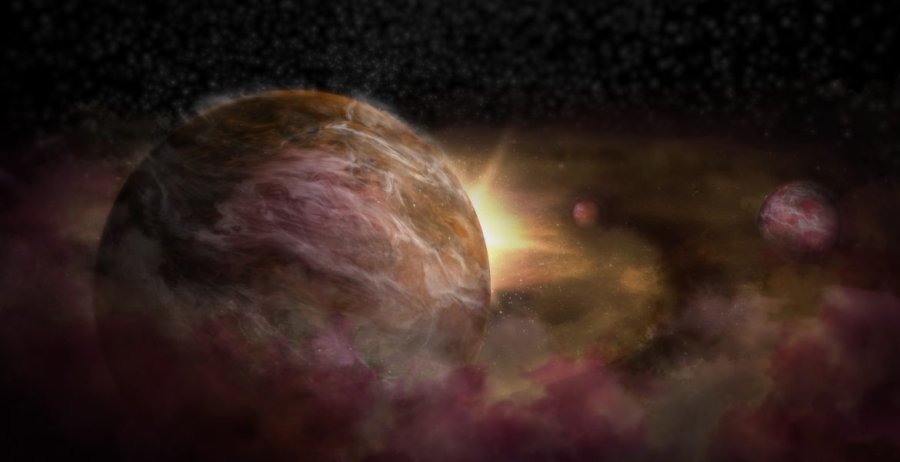MessageToEagle.com – Three infant planets have been found orbiting a young star 330 light-years from Earth, in the constellation of Sagittarius.
Two independent teams of astronomers have uncovered convincing evidence that these three young planets are in orbit around an infant star known as HD 163296.
To discover these objects, astronomers used the Atacama Large Millimeter/submillimeter Array (ALMA) in Chile.

“We looked at the localized, small-scale motion of gas in a star’s protoplanetary disk. This entirely new approach could uncover some of the youngest planets in our galaxy, all thanks to the high-resolution images coming from ALMA,” said Richard Teague, an astronomer at the University of Michigan and principal author on one of the papers.
To make their respective discoveries, each team analyzed the data from various ALMA observations of the young star HD 163296. HD 163296 is about 4 million years old and located about 330 light-years from Earth in the direction of the constellation Sagittarius.
Molecules of CO naturally emit a very distinctive millimeter-wavelength light that ALMA can observe. Subtle changes in the wavelength of this light due to the Doppler effect provide a glimpse into the kinematics – or motion – of the gas in the disk.
If there were no planets, gas would move around a star in a very simple, predictable pattern known as Keplerian rotation.
“It would take a relatively massive object, like a planet, to create localized disturbances in this otherwise orderly motion,” said Christophe Pinte of Monash University in Australia and lead author on one of the two papers.
“Our new technique applies this principle to help us understand how planetary systems form.”
Although thousands of exoplanets have been found using the Kepler space telescope, which watches for the dips of light that they cause as they pass in front of their star, this kind of planetary objects like these protoplanets cannot be detected using those techniques.
Rather than focusing on the dust within the disk, which was clearly imaged in an earlier ALMA observation, the astronomers instead studied the distribution and motion of carbon monoxide (CO) gas throughout the disk.
ALMA’s fantastic resolution enabled the researchers to measure carbon monoxide’s velocity patterns throughout the disk.
“The precision is mind boggling,” said coauthor Til Birnstiel of the University Observatory of Munich. In a system where gas rotates at about 5 kilometers per second, ALMA detected velocity changes as small as a few meters per second.
“This allows us to find very small deviations from the expected normal rotation in a disk,” Teague said. Planets change the density of the gas near their orbits, which changes the gas’s pressure, inducing these corresponding changes in velocity.
“We compared the observations with computer models to show that the observed flows fit beautifully with predictions for the flow pattern around a newborn planet a few times the mass of Jupiter,” said coauthor Daniel Price of Monash University.
This new technique allows astronomers to more precisely estimate protoplanetary masses and is less likely to produce false positives. “We are now bringing ALMA front and center into the realm of planet detection,” said coauthor Ted Bergin of the University of Michigan.
“Oftentimes in science, ideas turn out not to work or assumptions turn out to be wrong. This is one of the cases where the results are much more exciting than what I had imagined,” Birnstiel said.
“These studies will also help us to understand how planets like those in our solar system were born,” said coauthor Francois Menard from Grenoble University in France.
Both teams will continue refining this method and will apply it to other disks, where they hope to better understand how atmospheres are formed and what elements and molecules are delivered to a planet at its birth.
These results are presented in a pair of papers appearing in the Astrophysical Journal Letters.
MessageToEagle.com






